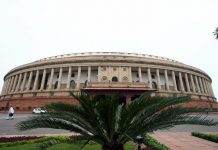This article is written by Gitika Wadhwani from Jagran Lakecity University Bhopal. This article deals with the federal system in India and its benefits and disadvantages to India and its people and the relation between Union and states.
Table of Contents
Introduction
Federalism is a system in which powers are divided between the Centre and states. Both have their spheres wherein they could exercise their powers without any encroachment by the other. The United States of America is the oldest federation in the world. India has a federal system of government but it differs from that of the USA. In India, powers are divided between the central and local authorities but there is no strict demarcation; rather there is a coordinated functioning between the Union and states and at times the federation is turned into a unitary system. Therefore, India is called a quasi-federal country.
Analyzing the federal system in India
India is a federal country where powers are divided between Unions and states but with certain unitary features. It is called a quasi-federal system which has certain features of the federal state and some features of the unitary state. These features are reflected in the constitution.
Federal features of India
- There is a dual government, that is, Union government and state governments.
- There is a clear division of powers between the Union and states under the Seventh Schedule of the Constitution.
- The Indian Constitution is rigid in the sense that it cannot be amended easily under Article 368. Some amendments require a special majority, and some other amendments require the approval of at least half of the states. This rigid process of amendment is an important feature of a federal system.
- In a federal system, the judiciary is independent of legislature and executive. In India, the judiciary is independent and free to decide the validity of the law and maintain the sanctity of the constitution.
- The Indian Constitution is the supreme law of the land and no one can exercise its powers beyond the principles of the Constitution.
- A federation has a bicameral system which means the legislature has two houses. India has a bicameral legislature that comprises two houses, that is, Lok Sabha and Rajya Sabha at the national level, and legislative assembly and legislative council at the subnational level.
Unitary features of India
Certain features reflect the unitary system in India. Article 1 of the Constitution defines India as a union of states and not the United States, which means union holds all the states. Indian federation is not a result of an agreement between the states who can be separated whenever they want.
- India has a single Constitution for both the centre and states and they have to function according to the framework of the Constitution.
- In India, people have only single citizenship which is a feature of the unitary system of government.
- The Indian constitution is a flexible document that can be amended as per the needs and requirements of society.
- India has an integrated judiciary, which means a unified hierarchy of courts where the decision of the apex court is binding on all lower courts.
- The administrative services such as IAS and IPS are created and kept under the control of the Union.
- During the proclamation of emergency, the powers are shifted to the Union and the Union has more power over states.
The relation between union and state in reality – coming out of bookish language
The relation between Union and States can be divided into three broad categories:
Legislative relations
Articles 245, 246, 247, 248, 249, 250, 251, 252, 253, 254 and 255 of the Constitution talk about legislative relations between the Centre and States. The legislative powers are divided mainly based on two criteria:
Territorial jurisdiction
- Under Article 245, the Parliament has the power to make laws for the whole or any territory of India. The laws made by the Parliament cannot be challenged on the ground of extra-territorial operation.
- Whereas, the state may make laws for the whole or any part of the state.
The Doctrine of Territorial Nexus
The state legislature can make laws only applicable to their respective states; the laws made by one state and applied to another state can be challenged on grounds of extra-territorial operation unless there is a nexus between the state and the object.
The State of Bombay v. RMDC (1957)
In this case, the State of Bombay came up with a Bombay Lotteries and Prize Competitions Control and Tax (Amendment) Act (1958) to levy taxes on the lottery or prize competitions; the respondent whose newspaper was published in Bangalore, but was circulated in Bombay, also contained such crossword puzzles. The state government levied a tax on the respondent company. The respondent challenged the Act, saying that it is only applicable to the state of Bombay. The court held that if there is a nexus between the state and the object, sought to be achieved through the law, then it cannot be said to be extra-territorial. Therefore, the respondent is entitled to pay the taxes as their newspapers are being sold in the State of Bombay.
A similar pronouncement was made in the case of the State of Bihar v. Charusila Dasi (1959)
Subject matter
Article 246 deals with the subject matter on which Parliament and the State legislatures can make laws. The subject matter is divided into three lists in the seventh schedule:
- The Union list contains subject matters on which the Parliament can make laws.
- State list contains the subject matters on which State legislatures can legislate.
- The concurrent list contains the subject matter on which both Parliament or state legislature can make laws, but in case of conflict between central and state laws, the former will prevail.
If we talk about legislative relations in a real sense between the Union and States, it can be pointed out that India has a strong centre than states, though the power to legislate is distributed between the Union and States based on subject matters all the important matters are under the union list and concurrent list under which the union has more power over states. Also, all the residuary powers (Article-248) are with the Union. Parliament can also legislate on subject matters under state lists if:
- It is necessary for the national interest (Article-249).
- During the proclamation of emergency (Article-250), the centre becomes more powerful and parliament can make laws concerning the matters under the state list.
- Parliament can make laws for two or more states if the houses of legislature of those states pass the resolution to make the laws for their states by the parliament (Article-252).
- Lastly, all the legislation related to international agreements (Article-253) has been made by the Parliament. All these powers of the Parliament show that though India is a federal country it has a strong centre and at times it becomes unitary.
Administrative relations
Article 256, 257, 258, 259, 260, 261, 262, and 263 of the Indian Constitution deals with the administrative relation between Union and states.
- The Union can give direction to the state as it may appear necessary to the government in the exercise of its to the states who need assistance. executive powers.
- The executive power of the state shall be exercised in such a manner that it does not prejudice the executive power of the union, and the union can direct the state to maintain and construct the means of communication that is of national or military importance.
- The administrative powers are divided between the Union and States but the union has more power it can deal with disputes relating to water in any inter-state river for which Parliament by law may provide for adjudication. The President has the power to establish the inter-state council. The Parliament is empowered for the creation of an All-India service on the resolution passed by the Rajya Sabha which is common to the Union and states.
Financial relations
Article 264-291 deals with financial relations between the Centre and the states.
- The stamp duties mentioned in the union list are levied by the Central government, but collected by the state government within their state and proceeds from such duties are assigned to the states.
- The union government has the power to levy service taxes which shall be collected and appropriated by the centre or states following the principles formulated by the Parliament. The Union government levies and collects taxes on the sale and purchase of goods, but such tax is assigned to the states in the way prescribed by the Parliament by law.
- The Union provides grants-in-aid.
The financial relationship between the Union and states shows that the former has power over most of the financial matters of the latter, which are assisted and highly dependent on the former in terms of finance.
The relation between Union and States shows that India is federal in nature but unitary in spirit, powers are divided between Union and States but states are not sovereign. In case of national importance and conflict between the union and states, the role of the union is supreme. Time and again this supremacy of union has been reflected. Whenever there is a threat to the country, be it during the Indo-China war, the Indo-Pakistan war, or any internal disturbance, the union has been seen playing a vital role over all the states to deal with the situation. Even if we talk about the current situation then during covid times the role of the union has been major, all the powers related to directions, decisions were shifted to the union because of the extraordinary situation. This shows that India is a quasi-federal country. The distribution of powers is not rigid but dynamic.
The federal system – pros or cons for India and its people
The federal system in India has its pros and cons for India and its people.
Pros
- India is a diverse country with a population of around 1.38 billion, where it is not possible to monitor and regulate every state and its people. Therefore, giving powers to states to deal with their people on certain subjects reduces the burden of the Union and ensures efficient working at the local level.
- The federal system ensures democracy and freedom as there is no single government that will act like a dictator or creates a monopoly.
- There is no misuse of powers, and constitutionalism is ensured through a written constitution which is an important feature of the federal system.
Cons
- The federal system may lead to a polarised society because in India people in different states have different cultural practices.
- People may prioritize regionalism over patriotism which may lose the harmony and integrity of the country.
- In India, the concept of federalism cannot be seen in its true sense as the union has more power in certain cases like amendment powers, residuary powers to legislate, emergency powers.
- The difference in economic conditions between various states also poses a threat to a federation, because the economically viable states may dominate the weaker states.
Conclusion
India has a quasi-federal system of government where there is a division of powers between the centre and states. There are separate lists that deal with the subject matters on which the union and state can legislate. Despite this division, there is a strong centre that has more powers in certain subject matters and under certain circumstances, this federal system may turn unitary. With such a wide diversity of people, it is difficult for the centre to regulate everything. Therefore, decentralizing through this federal system plays an effective role in the smooth functioning of the country. At the same time, unity and national integrity of the nation as a whole has to be maintained which can be done only through the supervision of the centre in all the states.
References
Students of Lawsikho courses regularly produce writing assignments and work on practical exercises as a part of their coursework and develop themselves in real-life practical skills.
LawSikho has created a telegram group for exchanging legal knowledge, referrals, and various opportunities. You can click on this link and join:
 Serato DJ Crack 2025Serato DJ PRO Crack
Serato DJ Crack 2025Serato DJ PRO Crack










 Allow notifications
Allow notifications



